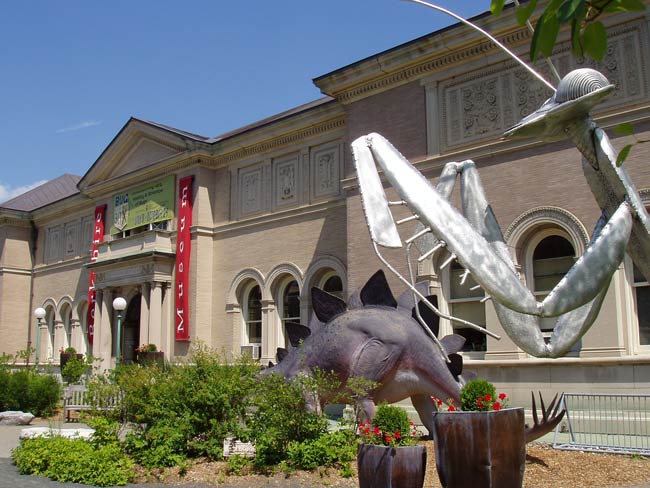
An article in the Berkshire Eagle the other day revealed the views of two trustees of the Berkshire Museum, Carol Riordan and Nancy Edman Feldman, who dissented in the decision to sell artworks to fund a “transformation” of the museum. The description characterized the discussion among trustees as a snowballing of handleable financial concerns that turned excessive in its solution. The “transformation” included replenishing the endowment and installing interactive exhibits, for which Riordan and Feldman suggested the evidence of community interest was pretty thin.
Riordan, who was the former treasurer of the board, and Feldman both quit the board in protest after the vote to sell last year. They believe that trustees and Executive Director Van Shields could have done much more to avoid the quick cash option of selling the art.
In auctions and private sales in April and May, the museum raised more than $42 million.
Riordan says she is confounded by Massachusetts Attorney General Maura Healey’s decision to allow sales of the art to proceed. “I don’t understand how the attorney general came to the conclusion that the museum needed $55 million to be viable. I feel it can keep its doors open for much less,” Riordan said. “I find the outcome of that incomprehensible. I don’t understand where they came up with that being needed.” Then she launched into a description of a process which may be all too recognizable for nonprofits who have been through a visioning process funneled toward a preferred outcome.
The Berkshire Eagle’s Stephanie Zollshan reports,
Looking back, Riordan takes issue with many steps the museum took on its way to art sales. They include initial work on a master plan, what she sees as gaps in its community outreach and the “party line” eventually reached about a proposed “new vision.”
As the process of pondering the museum’s future advanced behind closed doors, Riordan said the idea of pursuing a “transformative” change gained steam.
Sign up for our free newsletters
Subscribe to NPQ's newsletters to have our top stories delivered directly to your inbox.
By signing up, you agree to our privacy policy and terms of use, and to receive messages from NPQ and our partners.
In October 2016, trustees gathered at a retreat reviewed their options, as presented by a consultant.
Securing $25.6 million, an option labeled “opening bid,” would allow the museum to close its recurring deficit, address key needs and provide “baseline” renovations.
But the “silver” option, achieved through finding $69.7 million, would allow the museum to tackle a major building renovation, including creation of a new atrium and entrance.
The consultants’ scenarios were eventually reviewed by the court.
“I didn’t see something ‘transformational.’ That was the jargon used,” she said, adding that the discussion was framed as dire—a last-ditch attempt to avoid closing. “That was the management line—that we can’t tweak things at the edges. I didn’t agree with how the museum wanted to reposition itself…I thought a lot of the process was words that don’t mean a lot.”
“The board was convinced that there was no future in continuing to do what we were doing.”
As treasurer, Riordan said that there were other, more incremental ways to address the problems that undeniably existed. Instead, a capital campaign was suspended and the director of advancement was let go. Feldman, who had raised money for public television, said she volunteered to raise money from people from New York and Boston who own second homes in the Berkshires, but her suggestions went nowhere.
It is to be expected, of course, that in a time of radical change in the institution, some disagreements would exist on the board even to the point of sparking resignations. These kinds of peeks at what the process felt like may help us all think about how to approach what we have in front of our own boards.—Ruth McCambridge













